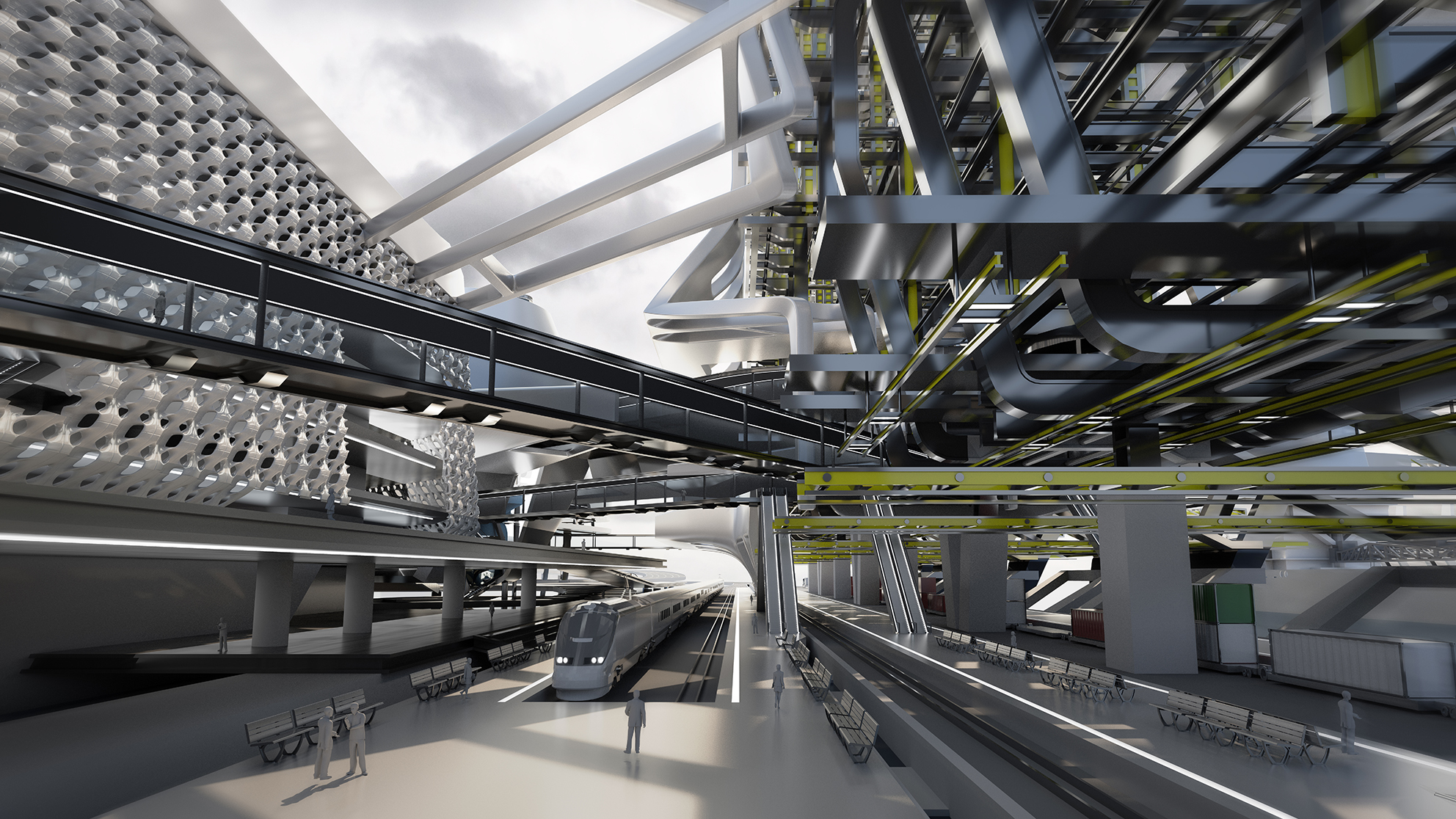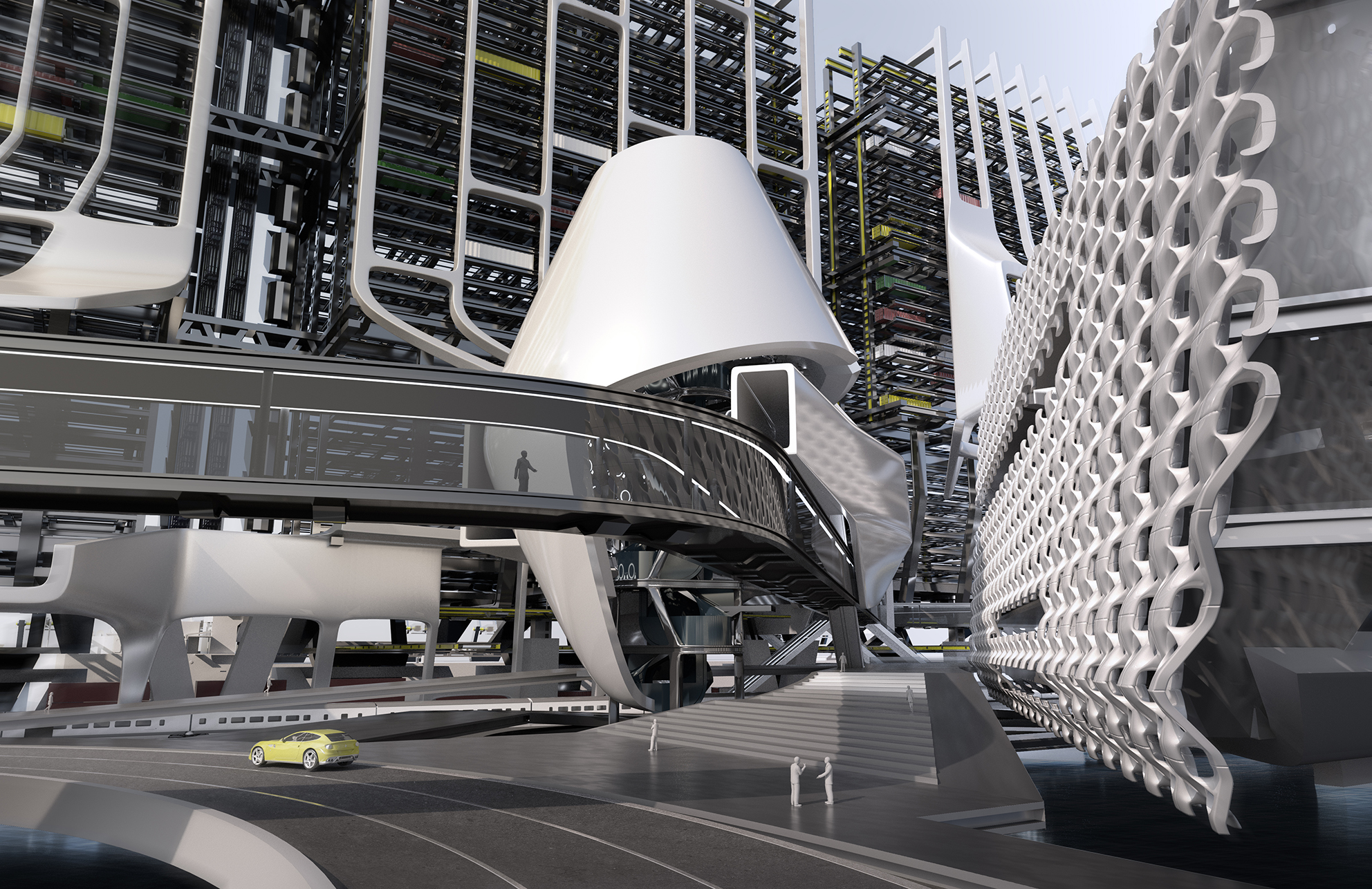Hyperport
Incheon, South Korea
; Urban Gateway for Future Evolution
Studio Hani Rashid Academic Project - ‘Spring 2018’
Individual Work
Diploma Thesis Project
Beauty of Imperfection
“There is a crack in everything, that’s how the light gets in.”
In the case of this ancient art form it’s about emphasizing breakage and repair as part of the history of an object, rather than something to disguise. It is based on imperfection and impermanent properties caused by Asian Buddhist culture, unlike finding
beauty in perfection such as symmetry, geometry, and golden ratio in the West.
Beauty of Construction
If expand the philosophy of imperfection and breakage to architecture, it can be compared to the beauty of the building under construction. Aaron Betskky, who is a crictic, educator, and writer about architecture and design, said “A building is only as beautiful as the sum of its parts... It is a truism that a building under construction is much more beautiful than when it is completed.”
I fully agree with his view of the beauty of architectural imperfection that the space is more filled with potentials when it exposed its beauty of tectonics and raw metarial than when it is wrapped itself with a elegant finish. It is the glory of possibilities as much as the beauty of each element revealed so clearly that makes this construction so beautiful.
Port ; Gateway of City Evolution
Historically, technologies have developed in geographically favorable locations, often where land meets water. Port cities have always been at the crossroads of change. Traders embarked on wooden sailing ships in Amsterdam to explore new trading routes. London flourished by the power of its steam mills in the 18th and 19th century, and New York and Rotterdam were the world’s largest ports during the 20th century. And despite the remarkable development of alternative transport technologies, port facilities are still the most important trade, transportation infrastructure.
“There is a crack in everything, that’s how the light gets in.”
by Leonard Cohen
The word Kintsugi, literally means “golden joinery”, is a Japanese traditional method for repairing broken ceramics with a special lacquer mixed with gold, silver, or platinum.
In the case of this ancient art form it’s about emphasizing breakage and repair as part of the history of an object, rather than something to disguise. It is based on imperfection and impermanent properties caused by Asian Buddhist culture, unlike finding
beauty in perfection such as symmetry, geometry, and golden ratio in the West.
Beauty of Construction
If expand the philosophy of imperfection and breakage to architecture, it can be compared to the beauty of the building under construction. Aaron Betskky, who is a crictic, educator, and writer about architecture and design, said “A building is only as beautiful as the sum of its parts... It is a truism that a building under construction is much more beautiful than when it is completed.”
I fully agree with his view of the beauty of architectural imperfection that the space is more filled with potentials when it exposed its beauty of tectonics and raw metarial than when it is wrapped itself with a elegant finish. It is the glory of possibilities as much as the beauty of each element revealed so clearly that makes this construction so beautiful.
Port ; Gateway of City Evolution
Historically, technologies have developed in geographically favorable locations, often where land meets water. Port cities have always been at the crossroads of change. Traders embarked on wooden sailing ships in Amsterdam to explore new trading routes. London flourished by the power of its steam mills in the 18th and 19th century, and New York and Rotterdam were the world’s largest ports during the 20th century. And despite the remarkable development of alternative transport technologies, port facilities are still the most important trade, transportation infrastructure.











